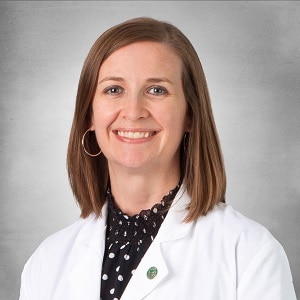COVID-19 presented Regional One Health pharmacists with the challenge of finding medical therapies to treat a completely new virus.
The team used emerging information from the frontline and their own experience and expertise to develop treatment plans to help patients.
Now, they’re looking to the next challenge related to COVID-19 – planning for and administering a vaccine.
When COVID-19 hit, the job descriptions for many health care professionals changed overnight. For members of Regional One Health’s pharmacy department, it meant becoming medical detectives, hot on the case of a way to treat a completely new disease.
It’s a role they stepped into without hesitation.
They pored over quickly produced studies and frontline reports from providers in hard-hit locations. They hunted through literature about which drugs improve plummeting oxygen levels and spiking fevers. And they searched deep within their own knowledge and experience base to connect the dots into effective treatment plans.
“Looking back, it was probably the definition of evidence-based medicine,” said Regional One Health inpatient pharmacist Maegan Rogers, PharmD, BCPS, CDE. “We had to put together the pieces of a puzzle. It’s like treating an infection without a definitive diagnosis – if we know the symptoms we’re trying to treat, we can come up with a regimen that should help.”
Clinical pharmacist David Hill, PharmD, BCPS, BCCCP, said everyone stepped up to help a completely different group of patients than they were used to.

Clinical pharmacist Maegan Rogers led a team that helped determine which medications would help COVID-19 patients. With a new disease and little information, “We had to put together the pieces of a puzzle,” she said.
“With an emerging disease, there’s no established guidance or published literature you can rely on,” Hill noted. “At Regional One Health, we’ve always treated the most unique disease states and patients, but this was completely new and unprecedented.”
So, how’d they do it?
Clear, open, honest communication was a hallmark of their efforts, Hill said. It meant colleagues could rely on and trust one another as they waded into uncharted territory.
“You need to go back to your knowledge and experience, and look at what others are trying, to sift through the noise and determine what will most likely help the patient,” Hill said. “Our pharmacists used their resourcefulness, inventiveness and knowledge to deliver medications differently and care for patients.”
Rogers and her team, including Theresa Brown, PharmD; Whitney Holmes, PharmD, BCPS; and Wes Savage, PharmD, BCPS, started by gathering the limited available information and sorting the good from the bad. They met with physicians to analyze the data, discuss which medications were working for specific symptoms, weigh risks vs. rewards of various drugs, etc.
They followed the clues as they pointed to different therapeutics, then tracked down more details to eliminate some and embrace others.
When hydroxychloroquine was touted early on, they analyzed the small-scale studies that were available, but determined the minor chance of a benefit did not outweigh risks to patients.
The opposite was true for zinc and vitamin D. Even though limited study did not formally prove a positive effect, they knew the medications would likely not harm patients, and there was a chance of them helping. They’re still in use today, Rogers said.

Along with determining which medicines could treat the new virus, pharmacists had to develop strategies for obtaining and conserving drugs when shortages emerged due to global demand.
Soon, it became clear steroids helped, and one in particular – Remdesivir – emerged as a leading option. But identifying drugs that worked was only half the battle.
As Hill noted, “When everybody’s dealing with the same thing and it hits everyone at the same time, there are back orders on everything.”
In some cases, pharmacists got inventive: faced with shortages of a medication used in inhalers for breathing treatments, they combined two available products to achieve the same effect.
But with Remdesivir, they had to create an entirely new procurement process.
Early on, the medication was supplied to states by the federal government. Vanderbilt University handled Tennessee’s allotment, but there was no established process for doling it out.
“We had to develop a system to determine how to allocate it to hospitals throughout the state. I made very good friends with the guy in their department in charge of shipping,” Rogers laughed. “In the end, I was really impressed. They would respond to requests within minutes and ship the same day. If a lot of hospitals in our area needed it, they’d even drive it over.”
Later, she was able to move Regional One Health’s Remdesivir supply in-house. Throughout the process, the pharmacy team has worked with physicians, nurses, respiratory therapists, IT and others to communicate guidelines to conserve limited resources.
“Everyone stepped up to help,” Rogers said. “Providers are volunteering to work with patients in the COVID-19 Unit, and as pharmacists, we’re committed to doing whatever we can to make sure they have access to the medications they need to give patients the best possible care.”

Clinical pharmacists are used to coming up with effective treatments based on a patient’s symptoms alone. It’s a skill they relied on as they helped care for patients with COVID-19.
Now, the pharmacy team is looking toward the next challenge: spearheading efforts to vaccinate as many people as possible against coronavirus.
Rogers said pharmacists are ready not only to administer the vaccine that is ultimately approved, but to answer questions and concerns about its safety.
“I hope people realize the reason it could be developed quickly is information was already out there, because it was a type of vaccine researchers were already working on,” she said. “Hopefully, we’ll be able to help people feel comfortable in its safety.”

